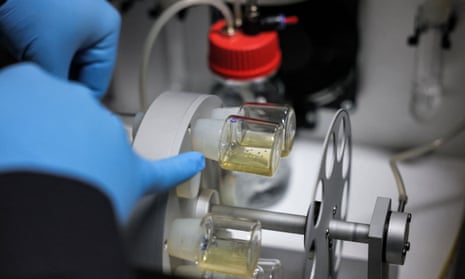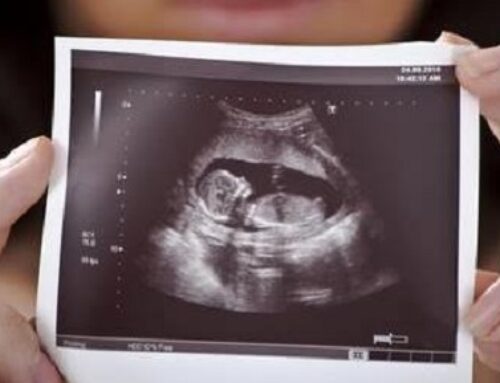A Sign of the Last of the Last Days…

Some, perhaps many upon creating, and discovering this horrific act exists will rejoice. Reinforce within their totally lost minds and souls declaring what a great achievement. Under the pretense of helping humankind, of all the health benefits.
While on the periphery bringing up the moral and ethical problems this latest invention of man could, or will certainly bring about.
Man is never content in being man serving God, listening to God, and obeying God. Man, since the Garden of Eden vainly, foolishly imagines himself a god not in need of God the Creator.
Constantly dabbling, meddling, and experimenting on how they could become creators. Thus really pushing God aside once and for all.
Do not be persuaded the sole intent of working on the development of creating synthetic human embryos is to cure diseases or figure out how to stop miscarriages. Not when the hearts and minds of men and women are totally depraved and in rebellion against God and His Word.
This latest invention of man is yet another sign of the last of the last days. We don’t know when, we don’t know the year, the month, or the day that the Antichrist and his false prophet achieve world control for a season and fulfill Bible prophecy, nor do we know the year, month, day, or hour that the Lord Jesus Christ returns a Second and final time in glory fulfilling all of Bible prophecy — but we ought to have the wisdom, the knowledge within spiritually to witness these events in the world and know in our hearts and minds there is not much time remaining for this world as it has been.
Read on…
Ken Pullen, A CROOKED PATH, Friday, June 16th, 2023
Synthetic human embryos created in groundbreaking advance
Exclusive: Breakthrough could aid research into genetic disorders but raises serious ethical and legal issues
Wednesday, 14 June 2023
By Hannah Devlin
Reprinted from The Guardian
Scientists have created synthetic human embryos using stem cells, in a groundbreaking advance that sidesteps the need for eggs or sperm.
Scientists say these model embryos, which resemble those in the earliest stages of human development, could provide a crucial window on the impact of genetic disorders and the biological causes of recurrent miscarriage.
However, the work also raises serious ethical and legal issues as the lab-grown entities fall outside current legislation in the U.K. and most other countries.
The structures do not have a beating heart or the beginnings of a brain, but include cells that would typically go on to form the placenta, yolk sac and the embryo itself.
Prof Magdalena Żernicka-Goetz, of the University of Cambridge and the California Institute of Technology, described the work in a plenary address on Wednesday at the International Society for Stem Cell Research’s annual meeting in Boston.
“We can create human embryo-like models by the reprogramming of [embryonic stem] cells,” she told the meeting.
There is no near-term prospect of the synthetic embryos being used clinically. It would be illegal to implant them into a patient’s womb, and it is not yet clear whether these structures have the potential to continue maturing beyond the earliest stages of development.
The motivation for the work is for scientists to understand the “black box” period of development that is so called because scientists are only allowed to cultivate embryos in the lab up to a legal limit of 14 days. They then pick up the course of development much further along by looking at pregnancy scans and embryos donated for research.
Robin Lovell-Badge, the head of stem cell biology and developmental genetics at the Francis Crick Institute in London, said: “The idea is that if you really model normal human embryonic development using stem cells, you can gain an awful lot of information about how we begin development, what can go wrong, without having to use early embryos for research.”
Previously, Żernicka-Goetz’s team and a rival group at the Weizmann Institute in Israel showed that stem cells from mice could be encouraged to self-assemble into early embryo-like structures with an intestinal tract, the beginnings of a brain and a beating heart. Since then, a race has been under way to translate this work into human models, and several teams have been able to replicate the very earliest stages of development.
The full details of the latest work, from the Cambridge-Caltech lab, are yet to be published in a journal paper. But, speaking at the conference, Żernicka-Goetz described cultivating the embryos to a stage just beyond the equivalent of 14 days of development for a natural embryo.
The model structures, each grown from a single embryonic stem cell, reached the beginning of a developmental milestone known as gastrulation, when the embryo transforms from being a continuous sheet of cells to forming distinct cell lines and setting up the basic axes of the body. At this stage, the embryo does not yet have a beating heart, gut or beginnings of a brain, but the model showed the presence of primordial cells that are the precursor cells of egg and sperm.
“Our human model is the first three-lineage human embryo model that specifies amnion and germ cells, precursor cells of egg and sperm,” Żernicka-Goetz told the Guardian before the talk. “It’s beautiful and created entirely from embryonic stem cells.”
The development highlights how rapidly the science in this field has outpaced the law, and scientists in the UK and elsewhere are already moving to draw up voluntary guidelines to govern work on synthetic embryos. “If the whole intention is that these models are very much like normal embryos, then in a way they should be treated the same,” Lovell-Badge said. “Currently in legislation they’re not. People are worried about this.”
There is also a significant unanswered question on whether these structures, in theory, have the potential to grow into a living creature. The synthetic embryos grown from mouse cells were reported to appear almost identical to natural embryos. But when they were implanted into the wombs of female mice, they did not develop into live animals. In April, researchers in China created synthetic embryos from monkey cells and implanted them into the wombs of adult monkeys, a few of which showed the initial signs of pregnancy but none of which continued to develop beyond a few days. Scientists say it is not clear whether the barrier to more advanced development is merely technical or has a more fundamental biological cause.
“That’s very difficult to answer. It’s going to be hard to tell whether there’s an intrinsic problem with them or whether it’s just technical,” Lovell-Badge said. This unknown potential made the need for stronger legislation pressing, he said.
~~~
The following is reprinted from a Feed Israel newsletter:
Israeli scientists have made a significant breakthrough by creating synthetic human fetuses using stem cells. These fetuses, which resemble those in the earliest stages of human development, could provide crucial insights into genetic disorders and recurring miscarriages. However, the ethical implications of such advances are being carefully considered. The fetuses, which lack certain vital organs like a beating heart or brain, are entirely made from fetal stem cells. While the potential of these synthetic fetuses to mature beyond early stages is still uncertain, they represent a significant step forward in medical research, promising a deeper understanding of fetal diseases and birth defects.







Leave A Comment
You must be logged in to post a comment.